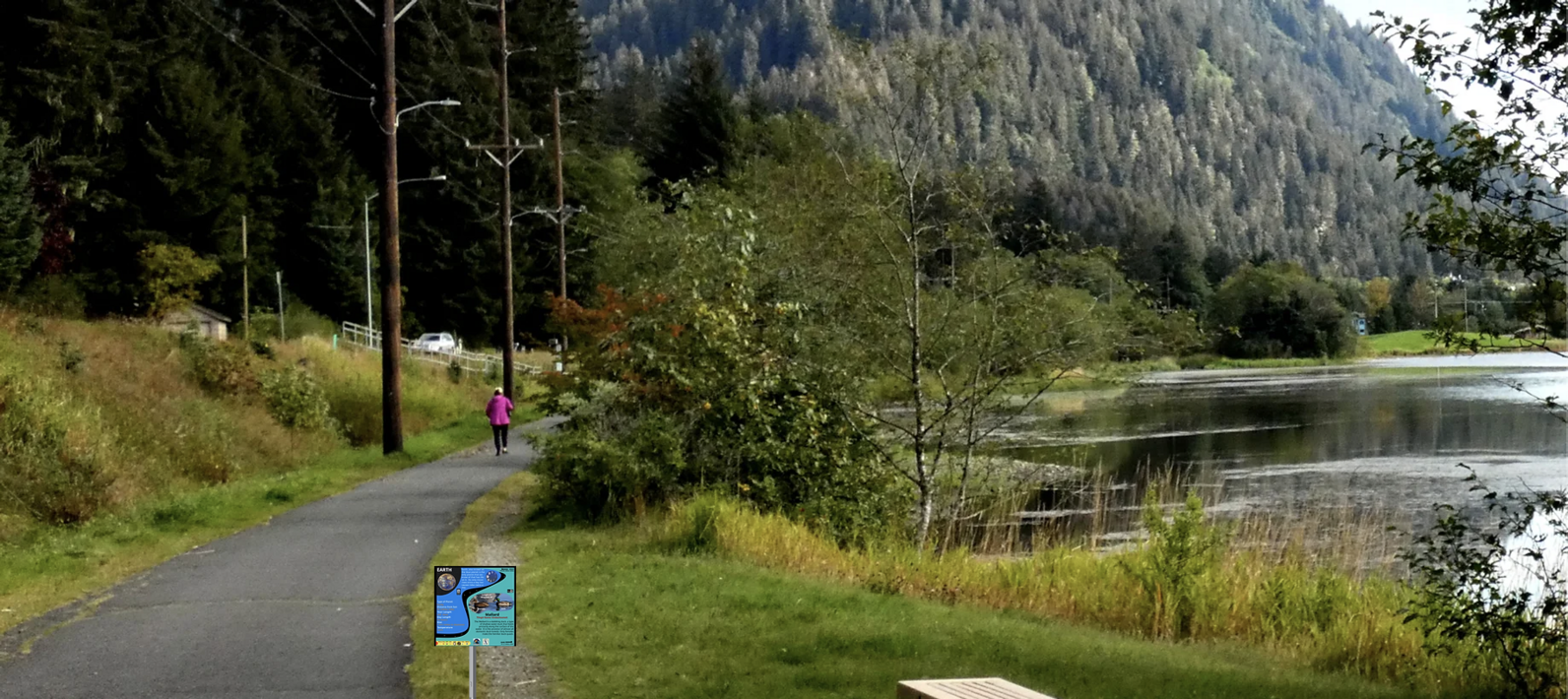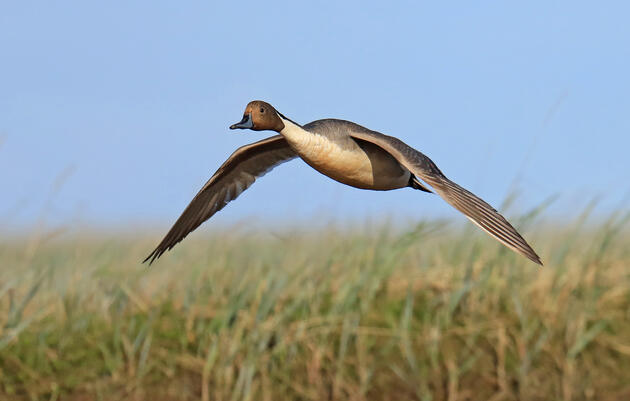Southeast Alaska will soon see the completion of a new Juneau Audubon Society (JAS) project—the Planet and Bird Walk at Twin Lakes.
JAS, one of five Alaska state chapters of the National Audubon Society, is an independent nonprofit organization operating with an all-volunteer Board of Directors—meaning no paid staff—since 1977. That board includes Brenda Wright, a retired fish biologist with the U.S. Forest Service and currently a Member at Large. Wright has been on the board since 2000 and has held every position from program director to president.
Over the years, Wright has seen JAS programs and board members come and go. "Each person that joins has this great contribution," she says. However, she says the organization is successful as long as one objective is met. “It's still awareness…the process of talking about birds and nature.”
Bringing attention to birds and nature is done primarily through JAS programming and special projects, like the Planet and Bird Walk scheduled to be completed by summer 2024 at Twin Lakes—a park operated by the City and Borough of Juneau just down Egan Drive from downtown. And for those who may not be familiar, a planet walk is typically a scale model of our solar system showcasing the distance between the planets and depicted by informative wayside signs along a walking path in a park or public space. For instance, the Anchorage Light Speed Planet Walk is found along part of the Tony Knowles Coastal Trail.
JAS is partnering with the Marie Drake Planetarium for this project. Wright and the planetarium’s longtime Board President, Cristina Della Rosa, are old friends and wanted to revamp the now-faded planet walk that used to be found along the one-mile path at Twin Lakes. Della Rosa says the original planet walk at Twin Lakes was created around the year 2000 and overseen by Michael Orlove—a well-known Juneau volunteer who had been with the Marie Drake Planetarium for more than 20 years. When he moved away, maintenance for the planet walk—then markings on the actual walkway itself and a large sign about space on the restroom structure—went, too. Orlove died in 2022, and there will be a commemoration of his efforts on the restored restroom sign.
But there's one thing that sets this planet walk apart. The Twin Lakes walk will include signs for the Sun and the eight planets in our solar system that will also feature a corresponding bird species that can be spotted at Twin Lakes. The signs will educate walkers on our solar system as well as local bird species.
“It will be unique, in the whole universe, being a bird and planet walk,” Della Rosa says.
And how did Della Rosa and Wright sell space and birds as a natural pairing to the CBJ Parks & Recreation department?
“That was a really fun part for me because I asked a whole bunch of different people which bird would you go with which planet,” Wright says.
For example, “Eagle’s pretty easy because that's our biggest bird…and so that goes with Jupiter.” Then Rufous Hummingbird for Mercury, Great Blue Heron for the Blue Planet (Neptune), and so on. And Saturn? That’s obvious. Ring-necked Duck.
The Common Raven is paired with the sun based on the story Raven Steals the Sun, or sometimes How Raven Stole the Light, in Alaska Native lore. The group also wanted to ensure the Tlingit words for the birds and planets would be on the signs, too, as they would be staked into the ground of the Áak'w Ḵwáan Territory. Wright and the group used a Tlingit dictionary for these translations and had their work confirmed by an instructor at the University of Alaska Southeast.
And it worked. CBJ Parks & Recreation is “totally excited about having this comeback,” Wright says.
Marie Drake Planetarium volunteer Shellie Hanson designed the mockups of the signs in collaboration with Parks & Recreation. The main sign on the restroom will also include QR codes for audio of the bird calls to the species highlighted along the walk. This will take care of Wright’s aforementioned mission of the Juneau Audubon Society—awareness of nature. “There’s tons and tons of people that use that use that walk every single day and lots and lots of children,” she says.

Twin Lakes is also a significant spot in Southeast Alaska for birds. It’s still part of the Mendenhall Wetlands complex—designated an Important Bird Area in 2007 by the National Audubon Society—although Egan Drive bisects it from the 3,760-acre Mendenhall Wetlands State Game Refuge. As a whole, the Mendenhall Wetlands network has the third-greatest acreage of vegetated tidal salt marsh of all estuaries in Southeast Alaska and is widely acknowledged to be one of the key migratory waterfowl and shorebird stopover locations of coastal Alaska.
Approximately 230 species have been observed and reported in the area. That, plus nearly a dozen different mammals, eight anadromous fish species, and an abundance of marine life, according to the Southeast Alaska Land Trust.
And of course, Twin Lakes is also a stop along the Southeast Alaska Birding Trail—one of 19 sites in Juneau and Douglas Island. The side-by-side lakes attract both migrating and wintering waterfowl, resulting in common observations like Mallard, Greater and Lesser Scaup, Bufflehead, and Common and Hooded Merganser. More rare ducks, such as Redhead and Canvasbac,k may show up here. American Dippers can be seen in the small stream flowing into the lakes.
The project may also get plenty of attention this summer since that's the height of tourism season in Juneau and Southeast. According to a study by Audubon Alaska and the University of Alaska Fairbanks, nearly 300,000 visitors came to Southeast in 2016, spending $378 million and supporting more than 4,000 jobs. In 2023, Alaska’s cruise industry drew nearly 1.7 million passengers to the region—with no signs of slowing down in 2024. The 2023-launched Southeast Alaska Birding Trail app was designed to highlight these birding opportunities in Southeast, which "would add welcome diversity to an economy that land managers and locals seek to shift away from dependence on extraction-based industries," reads a story about the app recently published in Audubon Magazine.
The Planet and Bird Walk project has received funding from the Juneau Community Foundation's Blackwell Fund, Douglas-Dornan Foundation, and donors to the Marie Drake Planetarium and Juneau Audubon Society.
For the launch, Della Rosa and Wright have been discussing a party on Summer Solstice. Della Rosa has been kicking around the idea of folks getting a sticker that says, “I walked the Planet and Bird Walk at Twin Lakes”—or something similar.
So if you’re in Juneau this summer, get off Uranus and check out the Planet and Bird Walk at Twin Lakes.














